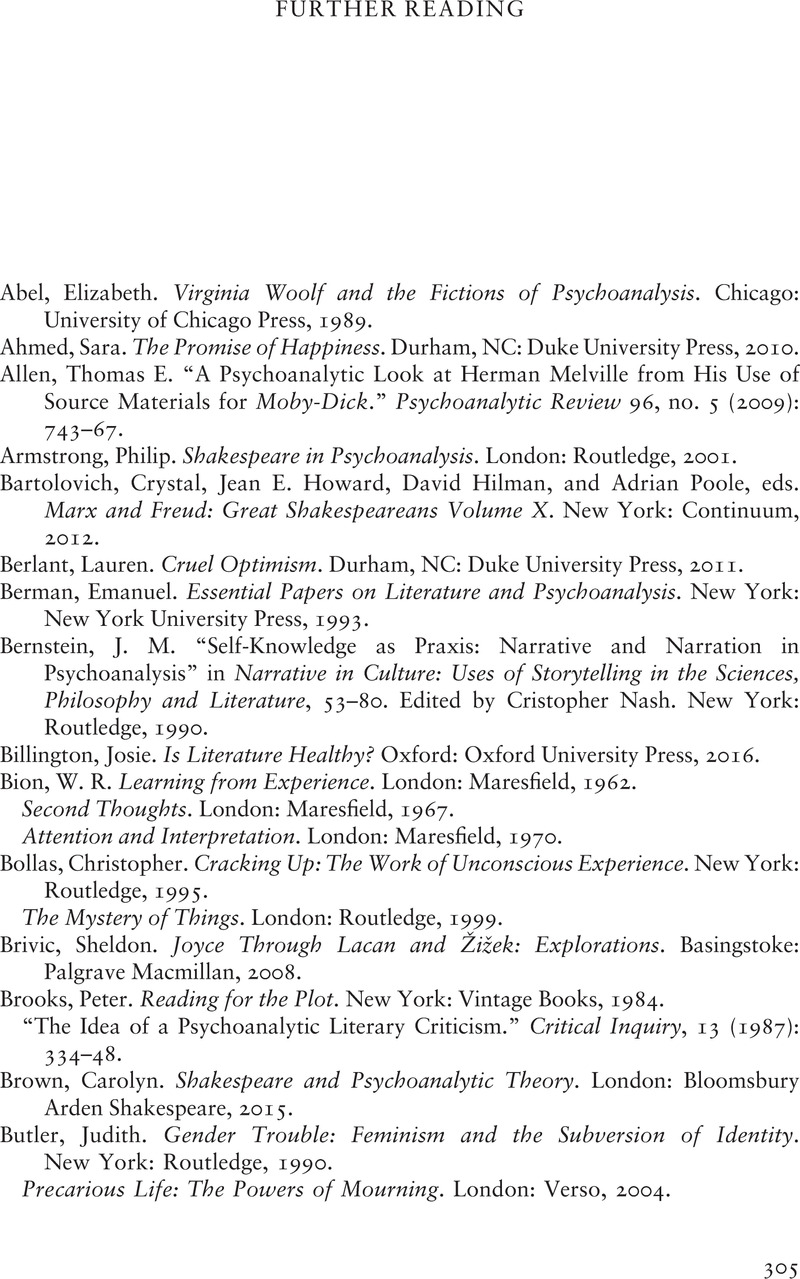Book contents
- The Cambridge Companion to Literature and Psychoanalysis
- The Cambridge Companion to Literature and Psychoanalysis
- Copyright page
- Contents
- Figures
- Abbreviations
- Contributors
- Acknowledgments
- Chronology
- Introduction Reading to Recover
- Part I In History
- Part II In Society
- Part III In Sight
- Part IV In Theory
- Further Reading
- Index
- References
Further Reading
Published online by Cambridge University Press: 16 December 2021
- The Cambridge Companion to Literature and Psychoanalysis
- The Cambridge Companion to Literature and Psychoanalysis
- Copyright page
- Contents
- Figures
- Abbreviations
- Contributors
- Acknowledgments
- Chronology
- Introduction Reading to Recover
- Part I In History
- Part II In Society
- Part III In Sight
- Part IV In Theory
- Further Reading
- Index
- References
Summary

- Type
- Chapter
- Information
- The Cambridge Companion to Literature and Psychoanalysis , pp. 305 - 309Publisher: Cambridge University PressPrint publication year: 2021

